A total of 59 parliamentary constituencies will witness voting in Phase 6 polling in the Lok Sabha Election 2019 on 12 May. Voting will take place in seven states across the country. Some constituencies in Bihar, Jharkhand, Madhya Pradesh, Uttar Pradesh and West Bengal will also go to polling in Phase 6. All Lok Sabha constituencies in Haryana and NCT of Delhi will vote on 12 May. The votes will be counted on 23 May. State-wise list of constituencies voting in Phase 6 on 12 May:
| States | Constituencies |
|---|---|
| Bihar (8 seats) | Valmiki Nagar, Paschim Champaran, Purvi Champaran, Sheohar, Vaishali, Gopalganj, Siwan, Maharajganj |
| NCT of Delhi (7 seats) | Chandni Chowk, North East Delhi, East Delhi, New Delhi, North West Delhi, West Delhi, South Delhi. |
| Haryana (10 seats) | Ambala, Kurukshetra, Sirsa, Hisar, Karnal, Sonipat, Rohtak, Bhiwani-Mahendragarh, Gurgaon, Faridabad |
| Jharkhand (4 seats) | Giridih, Dhanbad, Jamshedpur, Singhbhum |
| Madhya Pradesh (8 seats) | Morena, Bhind, Gwalior, Guna, Sagar, Vidisha, Bhopal, Rajgarh |
| Uttar Pradesh (14 seats) | Sultanpur, Pratapgarh, Phulpur, Allahabad, Ambedkar Nagar, Shrawasti, Domariyaganj, Basti, Sant Kabir Nagar, Lalganj, Azamgarh, Jaunpur, Machhlishahr, Bhadohi |
| West Bengal (8 seats) | Tamluk, Kanthi, Ghatal, Jhargram, Medinipur, Purulia, Bankura, Bishnupur |
Following are the details of Lok Sabha constituencies set to witness polling in Phase 6:Bihar 1. Valmiki Nagar Lok Sabha Constituency Constituency number: 1 Total electors: 14,56,576 Female electors: 6,70,279 Male electors: 7,86,297 Reserved: No Delimited: Yes. It came into existence in 2008 after Bagaha Lok Sabha seat was dissolved. Ramnagar Assembly segment was earlier de-reserved. Assembly constituencies: Valmiki Nagar, Ramnagar (SC), Narkatiaganj, Bagaha, Lauriya, Sikta Results in last four Lok Sabha elections: JD(U)’s BAidyanath Prasad Mahto represented the seat in 2009. In 2014, BJP’s Satish Chandra Dubey defeated rival Congress leader Purnmasi Ram. Demographics: It covers large parts of Paschim Champaran district. Though a Hindu-majority district, it has more than 8.65 lakh Muslims. It is located along the India-Nepal border. 2. Paschim Champaran Lok Sabha Constituency Constituency number: 2 Total electors: 1,41,3073 Female electors: 6,43,721 Male electors: 7,69,352 Reserved: No Delimited: Yes. It was created out erstwhile Bettiah parliamentary constituency and parts of Motihari Lok Sabha constituency, which were dissolved in 2008. Assembly constituencies: Nautan, Chanpatia, Bettiah, Raxaul, Sugali, Narkatia Results in last four Lok Sabha elections: BJP’s Sanjay Jaiswal has been the MP since 2009. Demographics: It covers parts of Paschim Champaran and Purvi Champaran. The region is part of the Red Corridor and receives funds from the Centre under the Backward Regions Grant Fund Programme. As per 2014 estimates, the constituency is the smallest electorate with 13,66,080 voters. 3. Purvi Champaran Lok Sabha Constituency Constituency number: 3 Total electors: 14,52,963 Female electors: 6,64,402 Male electors: 7,88,561 Reserved: No Delimited: Yes. Erstwhile Motihari constituency was split into two – Purvi Champaran and Paschim Champaran. Assembly constituencies: Harsidhi (SC), Govindganj, Kesaria, Kalyanpur, Pipra, Motihari. Results in last four Lok Sabha elections: BJP leader Radha Mohan Singh has been representing the seat since 2009. Demographics: It covers parts of Purvi Champaran district. The district has a population of 50,99,371 people of which 9.9 lakh are Muslims. It comes under the Red Corridor and is an economically backward district receiving funds under Backward Regions Grant Fund Programme. 4. Sheohar Lok Sabha Constituency Constituency number: 4 Total electors: 14,89,724 Female electors: 6,95,045 Male electors: 7,94,679 Reserved: No Delimited: No Assembly constituencies: Madhuban, Chiraia, Dhaka, Sheohar, Riga, Belsand Results in last four Lok Sabha elections: Mohammed Anwarul Haque won the seat in 1999 on the RJD ticket but lost when he contested on a BJP ticket in 2004 to RJD’s Sitaram Singh. Since 2009, BJP’s Rama Devi has been the MP. Demographics: It covers the entire Sheohar district and parts of Purvi Champaran, Sitamarhi districts. Dominated by Rajputs, the region is a Naxal-hit area and receives aid from the Centre under the Backward Regions Grant Fund Programme. Sheohar district has a population of 6,56,246 people of which 5.52 lakh are Hindus. 5. Vaishali Lok Sabha Constituency Constituency number: 16 Total electors: 15,87,202 Female electors: 7,32,421 Male electors: 8,54,781 Reserved: No Delimited: Yes. Lalganj Assembly segment of Vaishali was added to Hajipur parliamentary constituency in 2008. Assembly constituencies: Minapur, Kanti, Baruraj, Paroo, Sahebganj, Vaishali. Results in last four Lok Sabha elections: It is an RJD stronghold. Raghubansh Prasad Singh was the MP till 2014 when he lost to LJP’s Rama Kishore Singh. Demographics: It covers parts of Muzaffarpur and Vaishali districts. Vaishali district has a population of 34,95,021 people with a majority Hindu population. It comes under the Red Corridor and receives aid under the Backward Regions Grant Fund Programme. 6. Gopalganj Lok Sabha Constituency Constituency number: 17 Total electors: 16,52,767 Female electors: 7,91,748 Male electors: 8,61,019 Reserved: Yes. For Scheduled Castes Delimited: Yes. It was earlier a de-reserved constituency before 2008. Assembly constituencies: Baikunthpur, Barauli, Gopalganj, Kuchaikote, Bhore (SC), Hathua. Results in last four Lok Sabha elections: The seat has shifted between the RJD, JD(U) and BJP in the last four elections. At present, BJP’s Janak Ram holds the seat. Demographics: It covers the entire Gopalganj district. As per 2014 estimates, it is the largest constituency electorate-wise in the state. It is the home district of RJD chief Lalu Prasad Yadav where his ancestral village Phulwaria is situated. It has an SC population of 3,20,064, lower than its Muslim population of more than 4.3 lakh people. It receives aid under the Backward Regions Grant Fund Programme. 7. Siwan Lok Sabha Constituency Constituency number: 18 Total electors: 15,63,860 [caption id=“attachment_6337081” align=“alignnone” width=“825”] 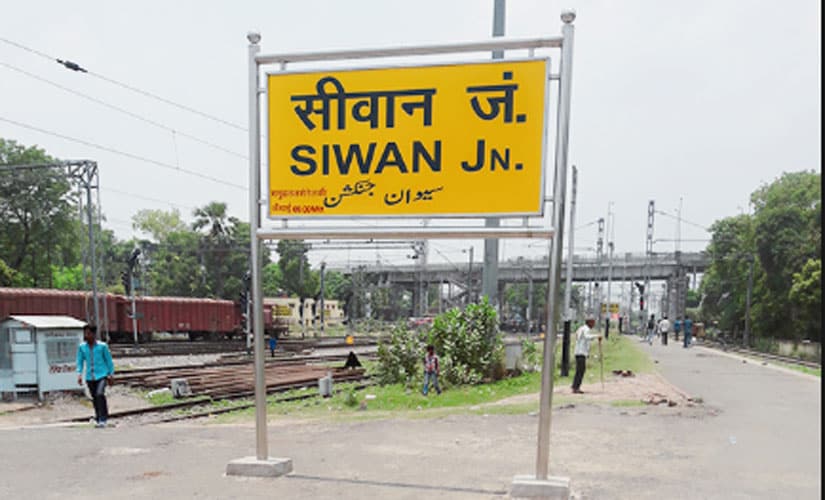 It was a stronghold of RJD with convicted criminal Mohammed Shahabuddin as its MP from 1996 to 2009. Image credit ArmouredCyborg/Wikimedia Commons[/caption] Female electors: 7,22,125 Male electors: 8,41,735 Reserved: No Delimited: No Assembly constituencies: Siwan, Ziradei, Darauli (SC), Raghunathpur, Daraunda, Barharia Results in last four Lok Sabha elections: It was a stronghold of RJD with convicted criminal Mohammed Shahabuddin as its MP from 1996 to 2009. An Independent candidate Om Prakash Yadav won the seat in 2009. In 2014, he contested the election on a BJP ticket and won. Demographics: It covers large parts of Siwan district. It has a population of 33,30,464, with a sizeable Muslim population of 6.08 lakh people. There are 3,86,685 Scheduled Castes members in the district. It is also identified as an economically backward district under the Backward Regions Grant Fund Programme. 8. Maharajganj Lok Sabha Constituency Constituency number: 19 Total electors: 16,44,524 Female electors: 7,62,260 Male electors: 8,82,264 Reserved: No Delimited: Yes. Taraiya Assembly segment was added to it from erstwhile Chapra Lok Sabha constituency in 2008 Assembly constituencies: Goriyakothi, Maharajganj, Ekma, Manjhi, Baniapur, Taraiya Results in last four Lok Sabha elections: JD(U)’s Prabhunath Singh remained the MP till 2009 when he lost the poll to RJD leader Umashankar Singh. He passed away in January 2013, necessitating a bypoll in the seat which RJD’s Prabhu Nath Singh won. However, he lost to BJP’s Janardan Singh in 2014. Demographics: It covers parts of Saran and Siwan districts. Saran district receives aid under the Backward Regions Grant Fund Programme currently. It has a population of 39,51,862 people, of which 4,74,066 belong to Scheduled Castes.
***
Delhi 1. Chandni Chowk Lok Sabha Constituency Constituency number: 1 Total electors: 14,47,228 (as per 2014 estimates) Female electors: 6,55,911 Male electors: 7,91,317 Reserved: No Delimited: Yes. Adarsh Nagar, Model Town and Wazirpur Assembly seats were added from East Delhi Lok Sabha constituency in 2008. Shalimar Bagh, Shakur Basti and Tri Nagar Assembly segments were added from erstwhile Outer Delhi Lok Sabha seat which was dissolved post-delimitation. Sadar Bazar and Model Town Assembly segments were added from erstwhile Delhi Sadar Lok Sabha constituency which was dissolved. Assembly constituencies: Adarsh Nagar, Shalimar Bagh, Shakur Basti, Tri Nagar, Wazirpur, Model Town, Sadar Bazar, Chandni Chowk, Matia Mahal, Ballimaran Results in last four Lok Sabha elections: BJP leader Vijay Goel won the seat 1999. Senior Congress leader Kapil Sibal defeated BJP leader Smriti Zubin. Sibal also won the seat 2009. In 2014, BJP leader Harsh Vardhan, defeating Aam Aadmi Party’s Ashutosh. Demographics: Muslim voters are generally the deciding factor for the constituency along with the Baniya community that occupies nearly 40 percent of the constituency. The constituency has a Muslim voter base of 15 percent, which was 30 percent before delimitation. The percentage of Scheduled Castes and OBCs have gone up to around 25 percent and 20 percent respectively after 2008. The Vaish community accounts for around 15 percent of the population. 2. North East Delhi Lok Sabha Constituency Constituency number: 2 Total electors: 19,57,707 Female electors: 8,78,301 Male electors: 10,79,406 Reserved: No Delimited: Yes. It was created in 2008. Assembly constituencies: Burari, Timarpur, Seemapuri (SC), Rohtas Nagar, Seelam Pur, Ghonda, Babarpur, Gokalpur (SC), Mustafabad, Karawal Nagar Results in last four Lok Sabha elections: Congress leader Jai Prakash Agarwal won the seat in 2009 and was succeeded by BJP leader Manoj Tiwari, defeating AAP’s Anand Kumar in 2014. Demographics: Poorvanchalis hold the key to decide the outcome of polls in this constituency. Seelampur, Babarpur and Mustafabad Assembly segments have a sizeable Muslim population. 3. East Delhi Lok Sabha Constituency Constituency number: 3 Total electors: 18,29,578 Female electors: 8,06,253 Male electors: 10,23,325 Reserved: No Delimited: Yes. Adarsh Nagar, Model Town and Wazirpur Assembly seats were removed from the constituency in 2008. Okhla was added from South Delhi Lok Sabha constituency. Jangpura was added from New Delhi Lok Sabha seat. Assembly constituencies: Jangpura, Okhla, Trilokpuri (SC), Kondli (SC), Patparganj, Laxmi Nagar, Vishwas Nagar, Krishna Nagar, Gandhi Nagar, Shahdara Results in last four Lok Sabha elections: BJP leader Lal Bihari Tiwari won the seat in 1999 but lost it to Congress leader Sandeep Dikshit in 2004 and remained so till 2014. In 2014, BJP leader Mahesh Girri won the seat, defeating AAP candidate Rajmohan Gandhi. Demographics: Apart from Poorvanchalis, the constituency also has a sizeable number of Paharis and Jats. It also has a sizeable Muslim population. 4. New Delhi Lok Sabha Constituency Constituency number: 4 Total electors: 14,90,147 [caption id=“attachment_6371181” align=“alignnone” width=“825”] 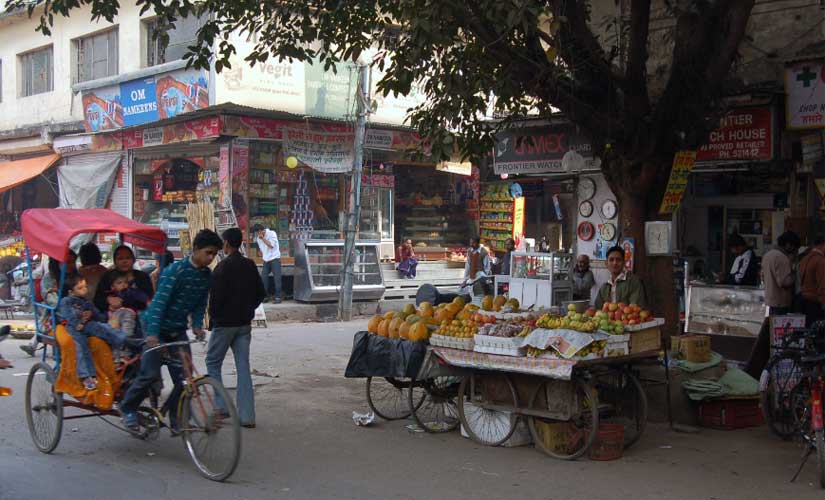 Housing a number of government offices, this constituency is not dominated by any caste or community. Bahnfrend/Wikimedia Commons[/caption] Female electors: 6,59,825 Male electors: 8,30,322 Reserved: No Delimited: Yes. Karol Bagh, Patel Nagar, Moti Nagar, Rajinder Nagar Assembly segments were added from erstwhile Karol Bagh Lok Sabha constituency which was dissolved in 2008. Malviya Nagar, RK Puram and Delhi Cantt Assembly segments were added from South Delhi parliamentary constituency. Assembly constituencies: Karol Bagh (SC), Patel Nagar (SC), Moti Nagar, Delhi Cantt, Rajinder Nagar, New Delhi, Kasturba Nagar, Malviya Nagar, RK Puram, Greater Kailash Results in last four Lok Sabha elections: In 1999, BJP leader Jagmohan won the seat. However, he lost to senior Congress leader Ajay Maken in 2004. Maken beat BJP leader Vijay Goel in 2009 too. In 2014, BJP leader Meenakshi Lekhi beat AAP’s Ashish Khetan. Demographics: Housing a number of government offices, this constituency is not dominated by any caste or community. 5. North West Delhi Lok Sabha Constituency Constituency number: 5 Total electors: 21,94,425 Female electors: 9,81,872 Male electors: 12,12,553 Reserved: Yes. For Scheduled Castes. Delimited: Yes. It was created in 2008. Badli, Nangloi Jat, Narela, Mangol Puri and Bawana Assembly seats were added from erstwhile Outer Delhi constituency post delimitation in 2008. Assembly constituencies: Narela, Badli, Rithala, Bawana (SC), Mundka, Kirari, Sultan Pur Majra (SC), Nangloi Jat, Mangol Puri (SC), Rohini Results in last four Lok Sabha elections: Congress leader Krishna Tirath won the seat in 2009. In 2014, BJP leader Udit Raj defeated AAP candidate Rakhi Birla. Demographics: North West district has a population of 36,56,539 people. It has an SC population of 6,97,237 people. 6. West Delhi Lok Sabha Constituency Constituency number: 6 Total electors: 20,39,410 [caption id=“attachment_6371421” align=“alignnone” width=“825”] 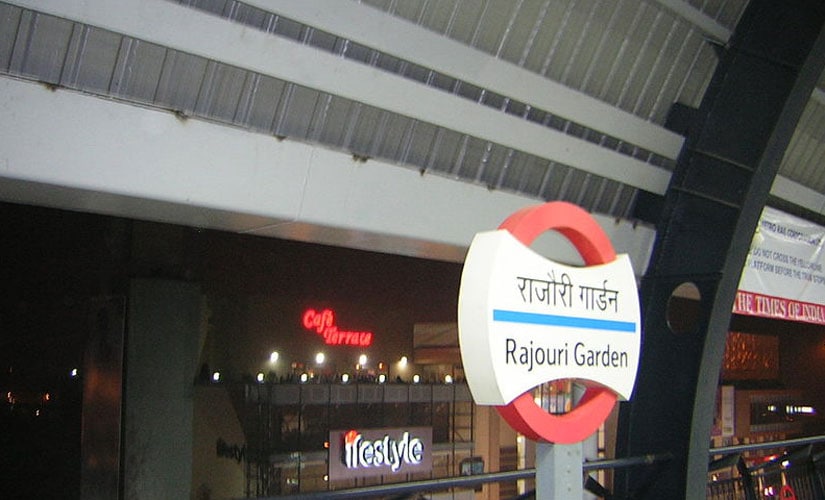 It has two dominating communities, namely the Sikhs and Jats. The constituency also has a sizeable Poorvanchali population. Image credit Rakesh/Wikimedia Commons[/caption] Female electors: 9,30,524 Male electors: 11,08,886 Reserved: No Delimited: Yes. It was created in 2008. Madipur, Najafgarh and Janakpuri Assembly seats were added from erstwhile Outer Delhi Lok Sabha constituency. Hari Nagar, Tilak Nagar, Rajouri Garden Assembly segments were added from South Delhi parliamentary constituency. Assembly constituencies: Madipur (SC), Rajouri Garden, Hari Nagar, Tilak Nagar, Janakpuri, Vikaspuri, Uttam Nagar, Dwarka, Matiala, Najafgarh Results in last four Lok Sabha elections: Congress leader Mahabal Mishra won the seat in 2009. In 2014, BJP leader Parvesh Verma defeated AAP’s Jarnail Singh. Demographics: It has two dominating communities, namely the Sikhs and Jats. The constituency also has a sizeable Poorvanchali population. 7. South Delhi Lok Sabha Constituency Constituency number: 7 Total electors: 17,52,741 Female electors: 7,47,452 Male electors: 10,05,289 Reserved: No Delimited: Yes. Okhla, Malviya Nagar, RK Puram and Delhi Cantt Assembly segments were removed from this constituency in 2008. Hari Nagar, Tilak Nagar and Rajouri Garden Assembly segments were removed from the South Delhi parliamentary constituency. Assembly constituencies: Bijwasan, Palam, Mehrauli, Chhatarpur, Deoli (SC), Ambedkar Nagar (SC), Sangam Vihar, Kalkaji, Tughlakabad, Badarpur Results in last four Lok Sabha elections: BJP’s Vijay Kumar Malhotra defeated Congress leader Manmohan Singh in 1999. Malhotra won the seat in 2004 too. In 2009, Congress leader Ramesh Kumar became the MP, defeating BJP’s Ramesh Bidhuri. However, the latter won in 2014, trouncing AAP candidate Colonel Devinder Sehrawat. Demographics: The constituency is dominated by Jats and Gujjars, who play a key role in deciding the fate of the contesting candidates.
***
Haryana 1. Ambala Lok Sabha Constituency Constituency number: 1 Total electors: 16,85,381 (2014 estimates) Female electors: 7,80,391 Male electors: 9,04,990 Reserved: Yes. For Scheduled Castes Delimited: Yes. In 2008, Panchkula and Yamunanagar Assembly segments replaced the Naggal and Chhachhrauli segments in this constituency. Yamunanagar was earlier in the Kurukshetra constituency. Assembly Constituencies: Kalka, Panchkula, Naraingarh, Ambala Cantt., Ambala City, Mulana (SC), Sadhaura (SC), Jagadhri, Yamunanagar Results in last four Lok Sabha elections: BJP candidate Rattan Lal Kataria won a majority in the year 1999. Congress candidate Kumari Selja succeeded Kataria in 2004 and was re-elected in 2009. In 2014, however, BJP returned to power when Kataria won a majority. Demographics: There are 11,28,350 people living in the Ambala district. It has an almost equal number of urban and rural population, according to the 2011 Census data. The Scheduled Caste population forms 26.3 percent of the population. The ruling BJP is likely to field a fresh face this election. 2. Bhiwani-Mahendragarh Lok Sabha Constituency Constituency number: 8 Total electors: 14,49,623 (2014 estimates) Female electors: 6,73,662 Male electors: 7,75,961 Reserved: No Delimited: Yes. In 2008 parts of the Bhiwani and Mahendragarh constituencies were merged to form this new constituency. Six segments were from Bhiwani and three from Mahendragarh. Gurgaon, which was a part of Mahendragarh, became a separate constituency. **Assembly Constituencies:**Loharu, Badhra, Dadri, Bhiwani, Tosham, Ateli, Mahendragarh, Narnaul, Nangal Choudhary Results in last four Lok Sabha elections: In 2009, the first Lok Sabha election in the constituency was won by Shruti Choudhry from the Congress. In 2014, BJP candidate Dharambir Singh was elected as an MP. Demographics: While the Bhiwani district has a population of 16,34,445, Mahendragarh has 9,22,088 people living in the area, according to data from the 2011 census. The population is primarily rural in data as per the data. Sitting MP Dharambir Singh, who has taken up the issues of farmers in the area and rallied for an increase in Minimum Support Price, will contest again in 2019. 3. Faridabad Lok Sabha Constituency Constituency number: 10 Total electors: 17,36,322 (2014 estimates) [caption id=“attachment_6296531” align=“alignnone” width=“825”]  Part of the National Capital Region, Faridabad has a population of 18,09,733. RISHABHNAGPAL20/Wikimedia Commons[/caption] Female electors: 7,69,580 Male electors: 9,66,742 Reserved: No Delimited: Yes. In 2008, the Mewla Maharajpur, Hassanpur, Ferozepur Jhirka, Nuh and Taoru Assembly constituencies were removed from this constituency. Four new were added. Assembly Constituencies: Hathin, Hodal (SC), Palwal, Prithla, Faridabad NIT, Badkhal, Ballabhgarh, Faridabad, Tigaon Results in last four Lok Sabha elections: BJP candidate Ram Chander Bainda won the election in 1999. He was succeeded by Avtar Singh Bhadana from Congress. Bhadana repeated his feat again in 2009. However, in 2014 BJP candidate Krishan Pal won the election. Demographics: Part of the National Capital Region, Faridabad has a population of 18,09,733. It has a Hindu majority as 89 percent of the population practices the religion. Faridabad has been recognised as a smart city. Sitting MP Krishan Pal, who wishes to run again, faces competition from former MP Avtar Singh Bhadana. A Congress politician, Bhadana had defected to the BJP in 2014. He has, however, returned to the grand old party and will run from Faridabad. 4. Gurgaon Lok Sabha Constituency Constituency number: 9 Total electors: 18,30,801 (2014 estimates) Female electors: 8,55,870 Male electors: 9,74,931 Reserved: No Delimited: Yes. Gurgaon was an Assembly constituency of the erstwhile Mahendragarh constituency. In 2008, it was carved out as a separate constituency by bringing together segments from Mahendragarh. Ferozepur Jhirka and Nuh from the old Faridabad constituency, too, were added. Assembly Constituencies: Bawal (SC), Rewari, Pataudi (SC), Badshahpur, Gurgaon, Sohna, Nuh, Ferozepur Jhirka, Punahana Results in last four Lok Sabha elections: In 2009, Rao Inderjit Singh from the Congress won the election. He then switched to BJP and won the election in 2014. Demographics: Gurgaon, too, is a part of the National Capital Region. While Gurgaon is fast growing as an Information Technology hub, the constituency is also home to Mewat, one of Haryana’s poorest areas. Rao Inderjit Singh, who is the sitting MP and son of former chief minister Birendra Singh, stands a good chance of winning this election. He helped set up a Gurugram Metropolitan Development Authority and his demand for an AIIMS in Rewari was recently accepted by the centre. 5. Hisar Lok Sabha Constituency Constituency number: 4 Total electors: 15,10,093 (2014 estimates) Female electors: 6,89,441 Male electors: 8,20,652 Reserved: No Delimited: Yes. In 2008, six Assembly constituencies were removed and five new were added to form the Hisar constituency. Kalayat, Narwana, Rajond, Jind and Ghirai were removed. Assembly Constituencies: Uchana kalan, Adampur, Uklana (SC), Narnaund, Hansi, Barwala, Hisar, Nalwa, Bawani Khera (SC) Results in last four Lok Sabha elections: In 1999, Surendra Singh Barwana from the INLD won the election from this constituency. Congress candidate Jai Prakash won a majority in 2009 elections. He was succeeded by Bhajan Lal, the founder of the Haryana Janhit Congress (Bhajan Lal) in 2009. In the next election, however, INLD candidate Dushyant Chautala won a majority. Demographics: As per the 2011 Census, 17,43,931 people live in Hisar, which has a majority of rural population. Dubbed the steel city of Haryana, it is also the Jat heartland in the state. It is one of the few seats with the INLD. Meanwhile, BJP is planning to field bureaucrat Brijendra Singh from here. Singh is the son of Union steel minister Chaudhury Birendra Singh. 6. Karnal Lok Sabha Constituency Constituency number: 5 Total electors: 16,79,370 (2014 estimates) Female electors: 7,69,722 Male electors: 9,09,648 Reserved: No Delimited: Yes. In 2008, the Jundla and Nautha Assembly constituencies were removed from the Karnal constituency limits. Moreover, the Panipat Assembly constituency was divided into two—rural and urban. Assembly Constituencies: Nilokheri (SC), Indri, Karnal, Gharaunda, Assandh, Panipat Rural, Panipat City, Israna (SC), Samalkha (SC) Results in last four Lok Sabha elections: In 1999 elections, ID Swamy from BJP was elected MP. He was succeeded by Arvind Kumar Sharma from Congress who held the fort for two terms (2004 and 2009). In 2014, BJP snatched the seat back when Ashwini Kumar won the election. Demographics: Karnal has a population of 15,05,324, of which 70 percent is rural. Sitting MP and media baron Ashwini Kumar won the seat in 2014 but owing to his failing health was not very active. He has now sought a ticket for his wife. However, BJP is mulling pitching Union minister Maneka Gandhi from Karnal. 7. Kurukshetra Lok Sabha Constituency Constituency number: 2 Total electors: 14,93,283 (2014 estimates) Female electors: 6,89,177 Male electors: 8,04,106 Reserved: No Delimited: Yes. In 2008, the Yamunanagar was added to Ambala constituency and Pai segment was dissolved. Ladwa and Kalayat segments were added. Assembly Constituencies: Radaur, Ladwa, Shahbad (SC), Thanesar, Pehowa, Guhla (SC), Kalayat, Kaithal, Pundri Results in last four Lok Sabha elections: INLD candidate Kailasho Devi won the election in the year 1999. She was succeeded by Naveen Jindal, who contested with a Congress ticket, in 2004. He won again in 2009. However, in 2014 BJP candidate Rajkumar Saini defeated Jindal by a margin of over 1.29 lakh votes. Demographics: Known as the Rice Bowl of Haryana, Kurukshetra recorded a population of 9,64,655. Formerly a BJP bastion, the saffron party will need a new face this election as sitting MP Rajkumar Saini launched his own party. Saini’s Loktantra Suraksha Party has tied up with BSP for the 2019 general elections. 8. Rohtak Lok Sabha Constituency Constituency number: 7 [caption id=“attachment_6296571” align=“alignnone” width=“825”] 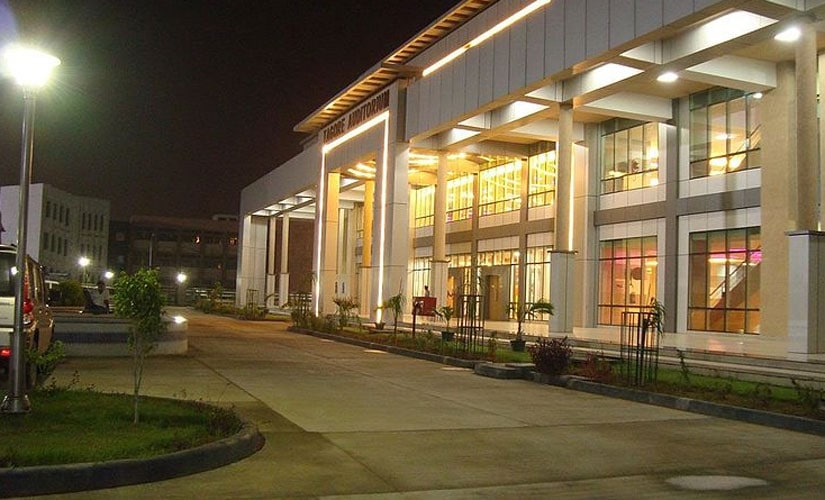 Rohtak is the only district to have an Indian Institue of Technology, an Indian Institute of Management and an All India Institute of Medical Sciences. Image credit Jazz0790/Wikimedia Commons[/caption] Total electors: 15,41,778 (2014 estimates) Female electors: 7,09,440 Male electors: 8,32,338 Reserved: No Delimited: Yes. In 2008, the Hassangarh and Salhawas segments were removed and Bahadurgarh and Kosli were added to the Kurukshetra constituency. Assembly Constituencies: Meham, Garhi Sampla-Kiloi, Rohtak, Kalanaur (SC), Bahadurgarh, Badli, Jhajjar (SC), Beri, Kosli Results in last four Lok Sabha elections: INLD candidate Inder Singh won the election in 1999. He was succeeded by Congress leader Bhupinder Singh Hooda. Since 2009, Bhupinder’s son Deepender has been MP from the constituency. Demographics: Rohtak district, which is the Jatt heartland, is home to 10,61,204 people, of which 42.04 per cent live in urban areas. Rohtak is the only district to have an Indian Institue of Technology, an Indian Institute of Management and an All India Institute of Medical Sciences. This constituency has been held by former chief minister Bhupinder Singh Hooda and son Deepender since 2004. It is the only constituency held by Congress in the state. However, owing to the Jat agitations, corruption cases against Bhupinder and a rising anti-incumbency sentiment, Congress may face trouble. 9. Sirsa Lok Sabha Constituency Constituency number: 3 Total electors: 16,58,574 (2014 estimates) Female electors: 7,73,757 Male electors: 8,84,817 Reserved: Yes. For Scheduled Castes Delimited: Yes. In 2008, the Darba Kalan, Bhattu Kalan and Rori segments were removed from this constituency. Narwana, Kalawali and Rania segments were newly added. Assembly Constituencies: Narwana (SC), Tohana, Fatehabad, Ratia (SC), Kalawali (SC), Dabwali, Rania, Sirsa, Ellenabad Results in last four Lok Sabha elections: INLD candidate Sushil Kumar Indola won the election in 1999. He was succeeded by Congress candidate Atma Singh Gill in 2004. In 2009, Congress candidate Ashok Tanwar won the seat. INLD made a comeback in 2014 when Charanjit Sigh Rori was elected MP. Demographics: The district of Sirsa has a population of 12,95,189, according to data from Census 2011. It has a primarily rural population as only 24.65 percent live in urban areas. The BJP has never won a Lok Sabha seat from this constituency. Home to the Dera Sacha Sauda, uncertainty shrouds the constituency this election season with the fall of Dera leader Ram Rahim Singh as the split in INLD. Hisar MP Dushyant Chautala has split from the INLD and floated his own party the Jannnayak Janata Party. 10. Sonipat Lok Sabha Constituency Constituency number: 6 Total electors: 14,09,786 (2014 estimates) Female electors: 6,36,818 Male electors: 772,968 Reserved: No Delimited: Yes. In 2008, the Bahadurgarh, Kailana and Rohat assembly segments were replaced by Ganaur, Kharkhauda and Jind segments. Bahadurgarh was added to Kurukshetra. Assembly Constituencies: Ganaur, Rai, Kharkhauda (SC), Sonipat, Gohana, Baroda, Julana, Safidon, Jind Results in last four Lok Sabha elections: In 1999, BJP candidate Kishan Singh Sangwan won the election. He repeated his feat in 2004. Congress took over the seat in 2009 when candidate Jitendra Singh won. However, BJP reclaimed the seat in 2014 when Ramesh Chadar was elected MP. Demographics: There are 14,50,001 people living in Sonipat, according to the 2011 census. Of this, 31.27 percent lives in urban setups. The Hindu majority constituency falls under the National Capital Region and has seen development projects take off in the past few years. Having a sizeable Jat population, the constituency may sway in favour of Congress as former chief minister Bhupinder Hooda holds influence over Jats. Moreover, seven of its nine Assembly segments are held by opposition parties.
***
Jharkhand 1. Giridih Lok Sabha Constituency Constituency number: 6 Total electors: 15,15,137 Female electors: 7,03,151 Male electors: 8,11,986 Reserved: No Delimited: No Assembly constituencies: Giridih, Dumri, Gomia, Bermo, Tundi, Baghmara Results in last four Lok Sabha elections: In 2004, JMM Tek Lal Mahto won the seat, trouncing BJP candidate Ravindra Kumar Pandey. However, in 2009, Pandey managed to defeat Mahto by more than 94,000 votes. BJP retained the seat in 2014 as well, with JMM’s Jagarnath Mahto as the runner up. Demographics: This constituency comprises parts of Giridih, Dhanbad and Bokaro districts. The population of Giridih district is 24.45 lakh people. Spread over an area of 4853.56 square kilometres, it was previously part of the Hazaribagh district. The region is inhabited by several tribal communities, mainly Mundas. On the other hand, with a population of 20.62 lakh, Bokaro district is one of the most industrialised zones in the country. It has a literacy rate of 72.01 percent, as Census 2011 and a sex ratio of 922 females per 1,000 males. 2. Dhanbad Lok Sabha Constituency Constituency number: 7 Total electors: 18,89,994 [caption id=“attachment_6301131” align=“alignnone” width=“825”] 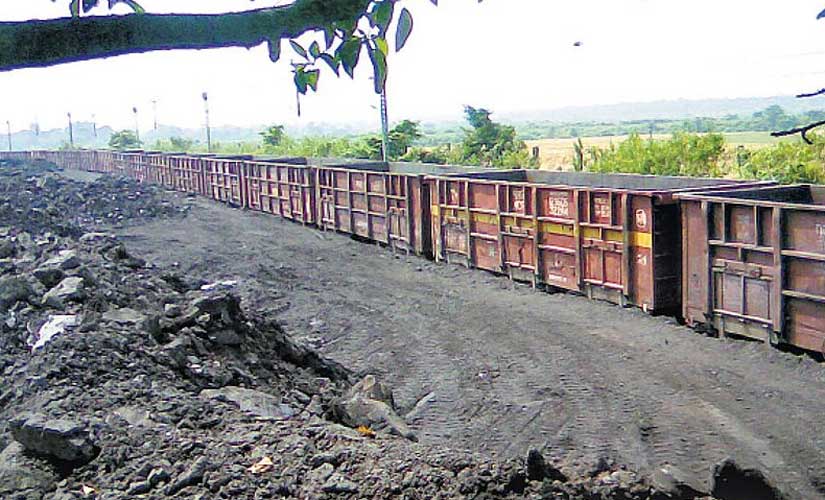 The coal mining industry dominates the district. Image courtesy Shivsh0336/Wikimedia Commons[/caption] Female electors: 8,57,989 Male electors: 10,32,005 Reserved: No Delimited: No Assembly constituencies: Bokaro, Sindri, Nirsa, Dhanbad, Jharia, Chandankiyari (SC). Results in last four Lok Sabha elections: Congress leader Chandra Sekhar Dubey won the 2004 election defeating BJP leader Rita Verma. However, BJP’s Pashupati Nath Singh snatched the seat from Congress in the 2009 election and retained it in the 2014 General Elections as well. Demographics: The Dhanbad parliamentary constituency is spread across parts of Bokaro and Dhanbad district in the state. Both districts are among the 250 backward districts receiving support from the Backward Regions Grant Fund Programme. Dhanbad is the second most populous district in the state after Ranchi, with a population of 26.84 lakh people. The coal mining industry dominates the district. Of the total population, 80.07 percent are Hindus while 16.08 percent are Muslims. 3. Jamshedpur Lok Sabha Constituency Constituency number: 9 Total electors: 15,81,665 [caption id=“attachment_6301191” align=“alignnone” width=“825”] 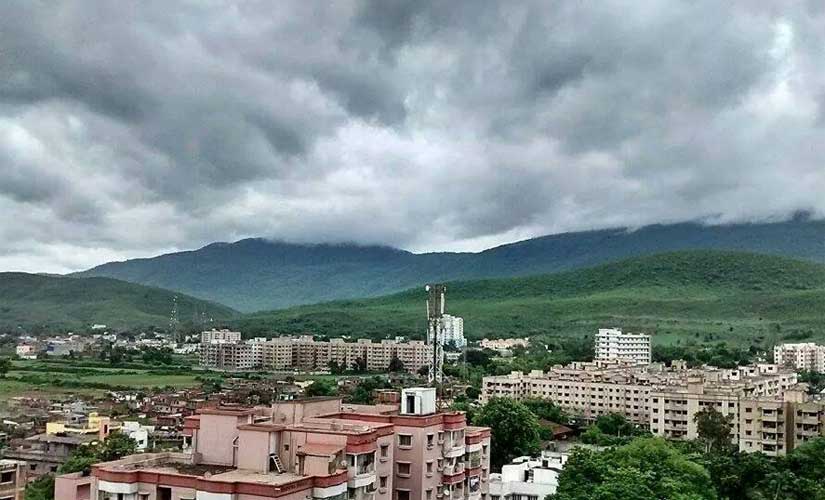 The constituency covers the entire East Singhbhum district. Image courtesy Shahbaz26/Wikimedia Commons[/caption] Female electors: 7,70,033 Male electors: 8,11,632 Reserved: No Delimited: No Assembly constituencies: Bahragora, Ghatsila (ST), Potka, Jugsalai (SC), Jamshedpur East, Jamshedpur West Results in last four Lok Sabha elections: In 2004, JMM’s Sunil Kumar Mahato came to power with a winning margin of 13.6 percent. Tribal leader and former Jharkhand chief minister Arjun Munda won the 2009 General Election on a BJP ticket, defeating JMM’s Suman Mahato. In 2014, BJP candidate Bidyut Baran Mahato grabbed the seat defeating Jharkhand Vikas Morcha (Prajatantrik)’s Ajay Kumar. Demographics: The constituency covers the entire East Singhbhum district. Located in the southeast corner of Jharkhand, East Singhbum district has a population of 22.93 lakh people. The economy of the district largely depends on cultivation or related work. Its literacy rate is 76.13 percent. The district is rich in minerals such as iron ore, copper, uranium, gold kyanite etc. 4. Singhbhum Lok Sabha Constituency Constituency number: 10 Total electors: 11,52,570 Female electors: 5,69,126 Male electors: 5,83,444 Reserved: Yes. For Scheduled Tribes. Delimited: No Assembly constituencies: Seraikela (ST), Chaibasa (ST), Majhgaon (ST), Jaganathpur (ST), Manoharpur (ST), Chakaradharpur (ST) Results in last four Lok Sabha elections: Veteran Congress leader Bagun Sumbrai, who passed away in June 2018, won the seat in 2004, defeating BJP’s Laxman Gilua. In 2009, independent candidate Madhu Kora won the election, trouncing BJP’s Barkuwar Gagrai. However, BJP’s Gilua, who is also the current state party unit president, clinched the seat in the 2014 elections. Demographics: The constituency covers the West Singhbhum district and a part of Seraikella-Kharsawan district. West Singhbhum district, which is a tribal region, has a population of 15,02,338 people, as per the latest census. It ranks first in terms of sex ratio (1005) against the state’s 949. More than 70 percent of the population is engaged in agriculture. In West Singhbhum, tribal groups constitute 67.31 percent of the district population. Its literacy rate is comparatively lower than the state average (66.41 percent) at 58.63 percent.
***
Madhya Pradesh 1. Morena Lok Sabha Constituency Constituency Number: 1 Total Electors: 17,02,492 (2014 estimates) Male Electors: 9,38,466 Female Electors: Assembly Constituencies: Vijaypur, Sheopur, Sabalgarh, Joura, Sumawali, Morena, Dimani, Ambah Reserved: No Delimited: Yes. In 2008. It became a general seat. It was earlier a seat reserved for Scheduled Castes. Results in last four Lok Sabha elections: Morena is considered a BJP safe seat. Former mayor of Morena, Ashok Argal, represented the constituency between 1996 and 2009. In the 2009 elections, Union Minister Narendra Singh Tomar was elected MP. In the 2014 elections, Anoop Mishra, the nephew of AB Vajpayee, got elected from this seat. Demography: The constituency covers the entire district of Morena and Sheopur. Once at the heart of Chambal dacoit menace, Morena continues to be an economic backwater. According to reports, caste has always played a major role during elections in this region. Dalits make up over 21 percent of Morena district and are also found in sizeable numbers in Sheopur district. Morena and Sheopur are part of the Chambal region, where OBC communities are the most dominant, followed by the upper castes (Brahmins, Kshatriyas and Banias). 2. Bhind Lok Sabha Constituency Constituency Number: 2 Total Electors: 15,98,169 (2014 estimates) Male Electors: 8,90,851 Female Electors: 7,07,318 Assembly Constituencies: Ater, Bhind, Lahar, Mehgaon, Gohad, Sewda, Bhander, Datia Reserved: Yes. For Scheduled Castes Delimited: Yes. In 2008. Results in last four Lok Sabha elections: This seat has consistently elected BJP candidates since 1989. Between 1996 and 2009, Ram Lakhan Singh represented the constituency. In 2009 elections, Ashok Argal won the seat before being replaced by Bhagirath Prasad Singh, who currently represents Bhind in the Lok Sabha. Demography: Bhind is situated in the Chambal region, which is one of the most fertile regions in India. The constituency covers the whole of Bhind and Datia district. The constituency has a significant number of Dalit voters as well as the influential upper castes like Thakur and Brahmins. Lodhis and Yadavs, both OBC communities, are also found in sizeable numbers in this constituency. 3. Gwalior Lok Sabha Constituency Constituency number: 3 [caption id=“attachment_6350001” align=“alignnone” width=“825”] 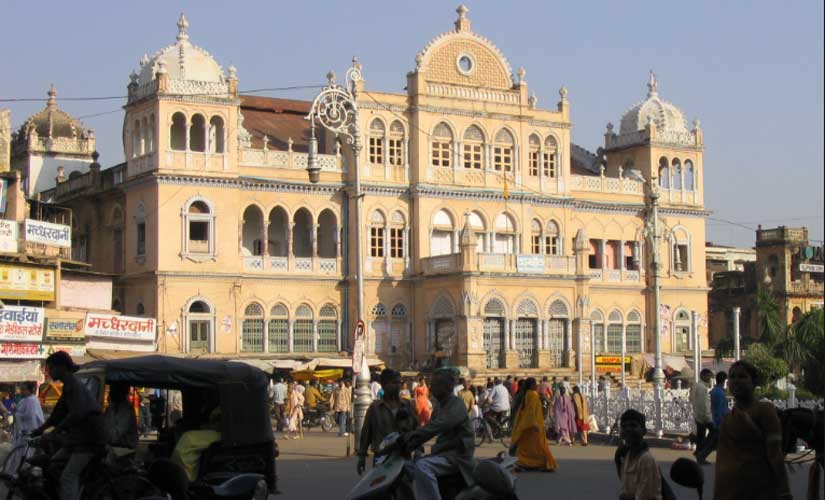 Brahmins, Thakurs and OBCs are also form a sizeable chunk of the electorate in the Gwalior Lok Sabha constituency. YashiWong/Wikimedia Commons[/caption] Total Electors: 18,77,003 (2014 estimates) Male Electors: 10,24,155 Female Electors: 8,52,848 Assembly Constituencies: Gwalior Rural, Gwalior, Gwalior East, Gwalior South, Bhitarwar, Dabra(SC), Karera (SC), Pohari Reserved: No Delimited: Yes. In 2008. Dabra constituency came into existence while Murar was renamed Gwalior rural. Results in last four Lok Sabha elections: In the 1999 elections, Jaibhan Singh Pavaiya won the seat on a BJP ticket. However, in 2004, he lost to Congress candidate Ramsevak Singh. In the 2007 by-poll, BJP’s Yashodhara Raje Scindia defeated Congress candidate Ashok Singh to win the seat. She retained the seat in the 2009 polls. In the last elections, Union Minister Narendra Singh Tomar won the prestigious seat. Demography: According to the 2011 Census, Gwalior district has a significant Dalit population, which stands at 22 percent. Moreover, Brahmins, Thakurs and OBCs also form a sizeable chunk of the electorate. Recently, Gwalior witnessed violence over the dilution of the SC/ST Act by the Supreme Court of India. This led to prolonged tensions between the Upper Castes and Dalits. 4. Guna Lok Sabha Constituency Constituency Number: 4 Total Electors: 16,05,619 (2014 estimates) Male Electors: 8,57,328 Female Electors: 7,48,291 Assembly Constituencies: Shivpuri, Pichhore, Kolaras, Bamori, Guna, Ashok Nagar, Chanderi, Mungaoli Reserved: No Delimited: Yes. In 2008. Bimori, new Assembly segment came into existence. Results in last four Lok Sabha elections: Madhavrao Scindia, the erstwhile titular ruler of Gwalior, won the seat in the 1999 elections. After the senior Congress leader’s death in 2001, his son Jyotiraditya Scindia has since been representing Guna in the Lok Sabha. Demography: A traditional stronghold of the Scindia family, the seat was once represented by the Rajmata of the Gwalior Royal Family. The demographic make-up of Guna is similar to neighbouring constituencies with Upper Castes, OBCs and Dalits (especially Jatavs) forming the bulk of electorate. Among the OBCs, there is a sizeable population of Yadavs, Dhakads and Kirars in some segments of the constituency. The constituency also has a significant presence of Saharia tribals in at least two of the Assembly segments in Guna. 5. Sagar Lok Sabha Constituency Constituency Number: 5 Total Electors: 16,05,619 (2014 estimates) Male Electors: 8,57,328 Female Electors: 7,48,291 Assembly Constituencies: Bina , Khurai, Surkhi, Naryoli, Sagar, Kurwai, Sironj, Shamshabad Reserved: No Delimited: Yes. In 2008. It was earlier reserved for Scheduled Castes Results in last four Lok Sabha elections: Virendra Kumar of the BJP won the seat four times between 1996 and 2004. In the 2009 elections, BJP’s Bhoopendra Singh won the seat. In the last election, Laxmi Narayan Yadav retained the seat for the saffron party. Demography: The Lok Sabha Constituency covers the district of Sagar. The district is well known for its religious significance for the Jain community. Moreover, Jains are an electorally significant community in the constituency, often punching above their weight. Sonis and Yadavs are also found in sizeable numbers in Sagar. Over 20 percent of the population belongs to the Scheduled Castes while around 10 percent of the population belong to the Scheduled Tribes category. 6. Vidisha Lok Sabha Constituency Constituency Number: 18 [caption id=“attachment_6350751” align=“alignnone” width=“825”] 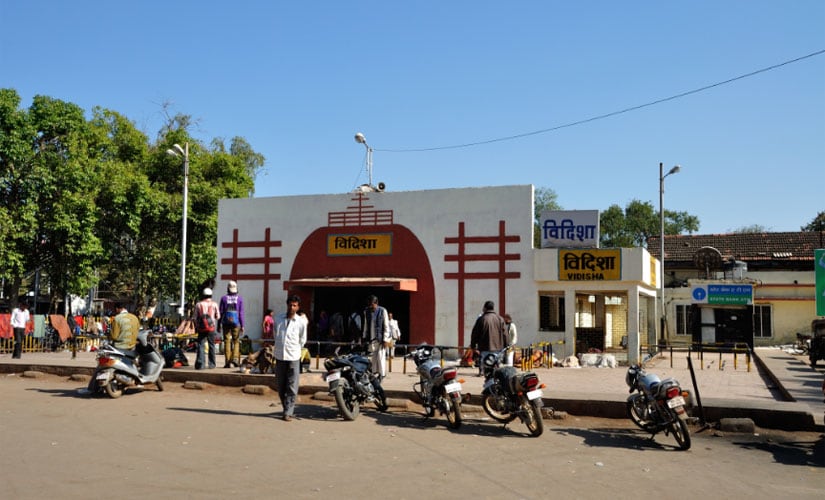 Vidisha is part of Madhya region of the state, where upper castes are an influential vote bank. Image credit Biswarup Ganguly/Wikimedia Commons[/caption] Total Electors: 16,34,370 (2014 estimates) Male Electors: 8,72,410 Female Electors: 7,61,960 Assembly Constituencies: Bhojpur, Sanchi, Silwani, Vidisha, Basoda, Budhni, Ichhawar, Khategaon Reserved: No Delimited: Yes. Budhni and Icchawar Assembly segments were merged with Vidisha. Results in last four Lok Sabha elections: The constituency was represented by former Madhya Pradesh chief minister Shivraj Singh Chouhan between 1991 and 2006. Since 2009, the seat is being held by External Affairs Minister Sushma Swaraj. Demography: Vidisha is a BJP stronghold since 1989. The constituency, which is spread across the districts of Raisen, Vidisha, Sehore and Dewas, is also crucial since Chouhan’s Vidhan Sabha constituency also comes under it. When it comes to caste factors, OBCs such as Kirars play a decisive role in shaping the electoral destiny of the candidates. Meenas are also found in sizeable numbers in the constituency. Vidisha is part of Madhya region of the state, where upper castes are an influential vote bank. 7. Bhopal Lok Sabha Constituency Constituency Number: 19 Total Electors: 19,56,936 (2014 estimates) Male Electors: 10,39,004 Female Electors: 9,17,932 Assembly Constituencies: Berasia, Bhopal Uttar, Narela, Bhopal Dakshin-Paschim, Bhopal Madhya, Govindpura, Huzur, Sehore Reserved: No Delimited: Yes, three new seats created in Bhopal Lok Sabha constituency. Results in last four Lok Sabha elections: The Bhopal Lok Sabha seat has continuously been with the BJP since 1989. In 1999, Union Minister Uma Bharti won the election from Bhopal. Between 2004 and 2009, Kailash Joshi held the seat for the BJP. Alok Sanjhar is the incumbent MP. Demography: This Lok Sabha constituency covers the entire Bhopal district. Bhopal is an urban constituency since 75 percent of the population lives in urban centres of the district. While Muslims are just over 6 percent of the population in Madhya Pradesh, they are a significant vote bank in Bhopal. At least two constituencies – Bhopal Uttar and Bhopal Central – have nearly 40 percent Muslim population. 8. Rajgarh Lok Sabha Constituency Constituency Number: 20 Total Electors: 15,78,748 (2014 estimates) Male Electors: 8,27,001 Female Electors: 7,51,747 Assembly Constituencies: Chachoura, Raghogarh, Narsinghgarh, Biaora, Rajgarh, Khilchipur, Sarangpur, Susner Reserved: No Delimited: Yes. In 2008. Raghogarh and Chachoura were added to Rajgarh Lok Sabha constituencies. Results in last four Lok Sabha elections: Lakshman Singh, the brother of Congress leader Digvijaya Singh, represented this constituency between 1994 and 2009. In 2009, Congress candidate Narayan Singh Amlabe won the seat. However, he lost to Rodmal Nagar in the 2014 elections by a margin of over 2 lakh votes. Demography: This constituency is the stronghold of Digvijaya Singh and his family. The former chief minister was himself elected twice from Rajgarh. The Sondhiya Rajputs have a considerable influence in the constituency. The community is estimated to have around 3 Lakh voters in the constituency. Other castes that are found in sizeable numbers are Dangis, Mahajans, Yadavs and Gurjars.
***
Uttar Pradesh 1. Sultanpur Lok Sabha Constituency Constituency number: 38 Total electors: 17,03,698 Female electors: 7,93,349 Male electors: 9,10,349 Reserved: No Delimited: Yes. Sultanpur Sadar was Jaisinghpur until 2008 delimitation. Assembly Constituencies: Isauli, Sultanpur, Sultanpur Sadar, Lambhu, Kadipur (SC) Results in last four Lok Sabha elections: The Bahujan Samaj Party won the seat in 1999 and 2004 elections. In 1999, Jai Bhadra Singh was declared the winner while in 2004 elections, Mohammad Tahir Khan became the MP. In 2009, however, Khan lost to Sanjay Singh of the Congress. In 2014, Varun Gandhi of the BJP defeated Singh’s wife Ameeta to clinch the seat. Demographics: Dalits are a sizeable section of the population in Sultanpur while Thakurs are said to be 15 percent of the electorate in the Lok Sabha constituency. Brahmins, who are 8-9 percent of the population in the state, are also a sizeable section of the electorate. Muslims, on the other hand, constitute 17 percent of the population. 2. Phulpur Lok Sabha Constituency Total electors: 19,13,274 Female electors: 8,49,377 Male electors: 10,63,897 Reserved: No Delimited: Yes. The constituency lost Handia and Pratappur Vidhan Sabha segments to Bhadohi Lok Sabha constituency. While it got Alllhabad West and Allahabad North Assembly constituency after the delimitation process. Assembly Constituencies: Allahabad West, Allahabad North, Phaphamau, Soraon (SC), Phulpur Results in last four Lok Sabha elections: The Samajwadi Party won the seat in 1999 and 2004 elections. In 2009 elections, Kapil Muni Karwariya won the seat on a BSP ticket. Keshav Prasad Maurya, currently deputy chief minister of Uttar Pradesh, won the seat in the 2014 elections. However, the BJP lost the 2018 by-poll to Nagendra Pratap Singh Patel of the Samajwadi Party. Demographics: The constituency is partial rural; while Allahabad West and Allahabad North segments are urban areas, the rest three Assembly segments are rural. While OBCs (over 20 percent) are the dominant factor in the rural parts of the constituency, upper caste voters like Kayasthas, Brahmins, Vaishyas are predominant in the urban areas. 3. Allahabad Lok Sabha Constituency Constituency number: 52 [caption id=“attachment_6280821” align=“alignnone” width=“825”] 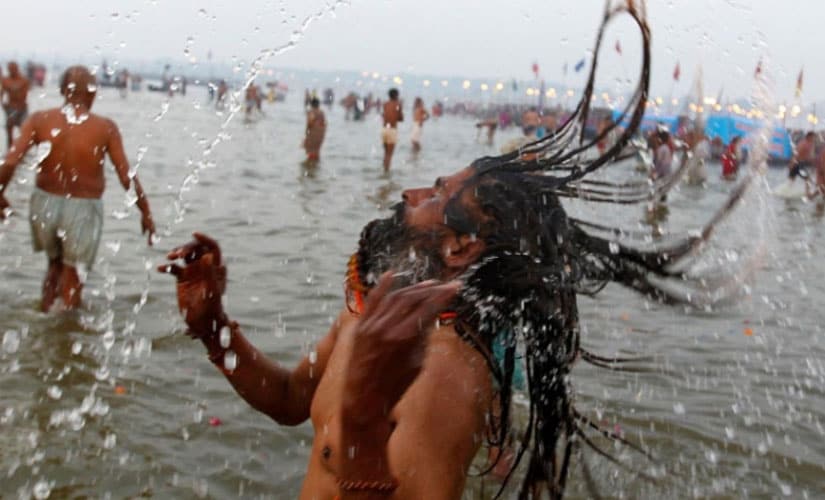 The recently concluded Mahakumbh held in Prayagraj, erstwhile Allahabad, was a major crowdpuller. Image courtesy News18[/caption] Total electors: 16,66,569 (2014 estimates) Female electors: 7,49,166 Male electors: 9,17,403 Reserved: No Delimited: No Assembly Constituencies: Meja, Karachhana, Allahabad South, Bara (SC), Koraon (SC) Results in last four Lok Sabha elections: In the 1999 elections, then human resource development minister, Murli Manohar Joshi, won the seat by defeating Rewati Raman Singh of the Samajwadi Party. Singh then won the seat back from Joshi in the 2004 elections. She was re-elected in the 2009 elections before losing to Shyama Charan Gupta of the BJP in the 2014 elections. The seat is known for electing many high-profile candidates like Lal Bahadur Shastri, VP Singh, HN Bahuguna and Janeshwar Mishra. Demographics: One of the economically significant districts in Uttar Pradesh, in 2014, Allahabad had a significant Patel and Dalit vote bank, each estimated to be over two lakh. The Bania community to which Gupta belongs is also a sizeable vote bank. Dalits, Thakurs and Brahmin voters, with their concentration in certain Assembly segments, also play a significant role in the electoral outcome in this constituency. 4. Pratapgarh Lok Sabha Constituency Constituency number: 39 Total electors: 17,16,625 (2014 estimates) Female electors: 7,92,957 Male electors: 9,23,668 Reserved: No Delimited: No Assembly Constituencies: Raniganj, Rampur Khas, Vishwanathganj, Patti, Pratapgarh Results in last four Lok Sabha elections: In the 1999 elections, Rajkumari Ratna Singh won the seat on a Congress ticket. Akshay Pratap Singh won the seat in the 2004 election, contesting as a Samajwadi Party candidate. In 2009, Ratna Singh won back the seat from the Samajwadi Party before losing to Kunwar Harivansh Singh of the BJP in 2014. Demographics: Pratapgarh is known for having a sizeable Muslim vote bank. Equally strong are the Brahmins and Thakurs of the constituency. Kurmis, an OBC community, in eastern Uttar Pradesh is also quite influential here. Apna Dal, which won the seat in the 2014 polls, is a political party influential among the Kurmi community. 5. Ambedkar Nagar Lok Sabha Constituency Constituency number: 55 Total electors: 17,18,774 (2014 estimates) Female electors: 7,95,221 Male electors: 9,23,553 Reserved: No Delimited: Yes. This constituency only came into being in 2008. Before the 2009 elections, this constituency was called Akbarpur, which is also the name of another constituency in Kanpur district. Assembly Constituencies: Goshainganj, Katehari, Tanda, Jalalpur, Akbarpur Results in last four Lok Sabha elections: In 2009 elections, Rakesh Pandey of the BSP won the seat while BJP candidate Hari Om Pandey registered a victory in the 2014 Lok Sabha elections. Notably, BSP supremo Mayawati won four times, when Akbarpur was a reserved constituency for Scheduled Castes. Demographics: A largely rural constituency, Ambedkar Nagar is at the centre of BSP’s politics, with reports of Mayawati contesting the upcoming elections from this seat doing the rounds since last year. The Scheduled Caste communities account for over 1/4th of the population in this constituency. According to reports, Muslims, Yadavs, Kurmis, Brahmins and Banias form significant blocks of voters in the constituency. OBC sub-communities like Rajbhar and Kewats can also play a decisive role in elections. 6. Shrawasti Lok Sabha Constituency Constituency number: 58 Total electors: 17,88,080 Female electors: 8,11,665 Male electors: 9,76,415 Reserved: No Delimited: Yes. This constituency came into existence in 2008. Prior to that, this constituency was called Balrampur. Assembly Constituencies: Bhinga, Shrawasti, Tulsipur, Gainsari, Balrampur Results in last four Lok Sabha elections: Vinay Kumar Pandey of the Congress won the seat in the 2009 elections while Daddan Mishra of the BJP defeated Samajwadi Party’s Atiq Ahmed to win the seat. Demographics: Shravasti is one of the comparatively smaller districts in the state. It has an overwhelming Muslim minority with its district headquarter Bhinga having a Muslim majority. Sahu community, a sub-community within OBCs are influential in the Shrawasti Lok Sabha constituency. Dalits constitute around 18 percent of the population. 7. Domariyaganj Lok Sabha Constituency Constituency number: 60 Total electors: 17,61,415 (2014 estimates) Female electors: 7,99,458 Male electors: 9,61,957 Reserved: No Delimited: No Assembly Constituencies: Domariyaganj, Shohratgarh, Kapilvastu, Bansi, Itwa Results in last four Lok Sabha elections: In 1999, Rampal Singh of the BJP won the seat. In 2004, Muhammed Muqueem of the BSP won the seat. Veteran leader Jagdambika Pal won the seat in the 2009 and 2014 Lok Sabha elections, first as a Congress candidate and then on a BJP ticket. Demographics: Part of Eastern Uttar Pradesh, Doomariyaganj has 2.50 lakh Brahmin, two lakh Dalits and three lakh backward caste voters. There are over three lakh Muslim voters too, according to one report. 8. Basti Lok Sabha Constituency Constituency number: 61 Total electors: 18,47,613 (2014 estimates) Female electors: 8,25,105 Male electors: 10,22,508 Reserved: No Delimited: Yes. Basti constituency made open to general category Assembly Constituencies: Harraiya, Kaptanganj, Rudhauli, Basti Sadar, Mahadewa Results in last four Lok Sabha elections: In the 1999 elections, Sreeram Chauhan of the BJP won the seat. BSP won the seat in the next two elections with Lal Mani Prasad being elected in 2004 and Arvind Kumar Choudhary being elected in 2009. In 2014 elections, Harish Chandra Dwivedi of the BJP won the seat. Demographics: Basti is dominated by the Kurmi community as well as Dalit communities. In fact, there were reports during the 1999 elections that Mayawati would fight election from here due to the presence of a significant Dalit vote bank. 9. Sant Kabir Nagar Lok Sabha Constituency Constituency number: 62 Total electors: 19,04,327 [caption id=“attachment_6281471” align=“alignnone” width=“825”] 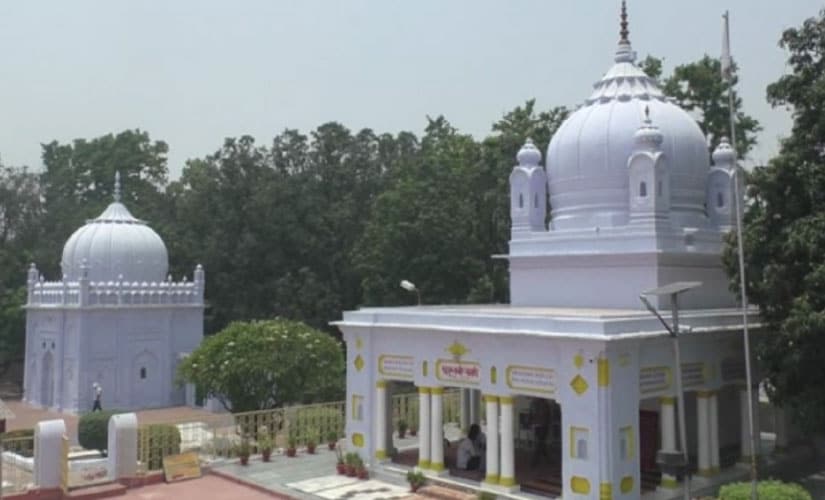 The Sant Kabir Nagar Lok Sabha constituency came into being in 2008. Image courtesy News18[/caption] Female electors: 8,58,897 Male electors: 10,45,430 Reserved: No Delimited: Yes. This constituency came into existence in 2008. Assembly Constituencies: Alapur, Menhdawal, Khalilabad, Dhanghata, Khajani Results in last four Lok Sabha elections: In 2009, Bhima Shankar, a BSP candidate, won the seat while Sharad Tripathi of the BJP won the seat in 2014 elections. Demographics: Brahmins and Rajputs have a considerable presence in this constituency. Kurmis also form a sizeable electorate in this constituency, according to some reports. Recently, the constituency’s representative Sharad Tripathi was in the news for hitting another MLA belonging to the Rajput community. This, many analysts, believe expose the caste faultline in the constituency. 10. Lalganj Lok Sabha Constituency Total electors: 16,61,483 Female electors: 7,54,732 Male electors: 9,06,751 Reserved: Yes. For Scheduled Castes Delimited: Yes. A new Assembly seat – Didarganj – was created within the Lok Sabha constituency. Assembly Constituencies: Atrauliya, Nizamabad, Phoolpur Pawai, Didarganj, Lalganj Results in last four Lok Sabha elections: While Bali Ram of the BSP has won the seat twice: 1999 and 2009 Lok Sabha elections, Daroga Prasad Saroj won the seat on a Samajwadi Party ticket in 2004 elections. In 2014, Neelam Sonkar of the BJP won the seat. Demographics: Part of Azamgarh district, which is considered a bastion of the Samajwadi Party, Lalganj’s electorate is dominated by Muslims and Dalits. 11. Azamgarh Lok Sabha Constituency Constituency number: 69 Total electors: 17,03,222 Female electors: 7,61,674 Male electors: 9,41,548 Reserved: No Delimited: No Assembly Constituencies: Gopalpur, Sagri, Mubarakpur, Azamgarh and Mehnagar Results in last four Lok Sabha elections: The Azamgarh seat is currently held by Samajwadi Party patriarch Mulayam Singh Yadav. Ramakant Yadav has won the seat thrice, first as a Samajwadi Party candidate, then as a BSP candidate and finally in 2009 as a BJP candidate. In 2008 by-poll, Akbar Ahmad of the BSP won the seat. Demographics: Yadavs, Muslims and Dalit – Chamar, Dhusia, Jhusia, Jatav – voters form the bulk of the electorate in Azamgarh. Notably, Yadav candidates have traditionally been winning the seat since 1952. Part of the industrially backward Eastern Uttar Pradesh, Azamgarh is also largely a rural constituency. 12. Jaunpur Lok Sabha Constituency Constituency number: 73 Total electors: 18,48,842 (2014 estimates) Female electors: 8,45,904 Male electors: 10,02,938 Reserved: No Delimited: Yes. Badlapur, Malhani, Mungra Badshahpur were the new Assembly constituencies after 2008. Assembly Constituencies: Badlapur, Shahganj, Jaunpur, Malhani, Mungra Badshahpur Results in last four Lok Sabha elections: Swami Chinmayanand, who later became a minister in the Atal Bihari Vajpayee cabinet, was elected from Jaunpur in 1999 elections. Parasnath Yadav of the Samajwadi Party was elected in the 2004 elections. Dhananjay Singh of the BSP won in the 2009 polls. In the last elections, BJP’s Krishna Pratap defeated Samajwadi Party candidate Parasnath Yadav to regain the seat after 10 years. Demographics: Jaunpur in Eastern Uttar Pradesh has a sizeable number of Thakurs, Dalits, Brahmins, Yadavs and Muslims voters who can determine the fate of the candidates. 13. Macchlishahr Lok Sabha Constituency Constituency number: 74 Total electors: 18,91,969 Female electors: 8,65,180 Male electors: 10,26,789 Reserved: Yes. For Scheduled Castes Delimited: Yes. Pindra Assembly constituency came into existence after the 2008 delimitation. Assembly Constituencies: Machhlishahr, Mariyahu, Zafrabad, Kerakat, Pindra Results in last four Lok Sabha elections: In 1999 elections, Chandra Nath Singh of the Samajwadi Party won the seat. In 2004 elections, Umakant Yadav of the BSP won the seat. In 2009 elections, Tufani Saroj of the Samajwadi Party won the seat. In the Modi wave of 2014, Ram Charitra Nishad of the BJP won the election by a margin of over 1,70,000 votes. Demographics: Over 20 percent of the population in this Lok Sabha seat is Dalit. Nishad, a community of fishermen considered to be Scheduled Castes, are also found in large numbers in this constituency. Kurmis and Yadavs are also found in significant numbers in this constituency. 14. Bhadohi Lok Sabha Constituency Constituency number: 78 Total electors: 18,34,598 (2014 estimates) Female electors: 8,18,598 Male electors: 10,16,000 Reserved: No Delimited: Yes. The constituency came into existence in 2008 Assembly Constituencies: Pratappur, Handia, Bhadohi, Gyanpur, Aurai Results in last four Lok Sabha elections: In 2009 elections, Gorakhnath Pandey registered a victory on this seat. In 2014 elections, Virendra Singh of the BJP won the seat. Demographics: Dalits, followed by Brahmins and Muslims are the most dominant groups in the electoral landscape of Bhadohi, which is situated in Eastern Uttar Pradesh.
***
West Bengal 1. Tamluk Lok Sabha Constituency Constituency number: 30 Total electors: 15,27,273 (2014 estimates) [caption id=“attachment_6298621” align=“alignnone” width=“825”] 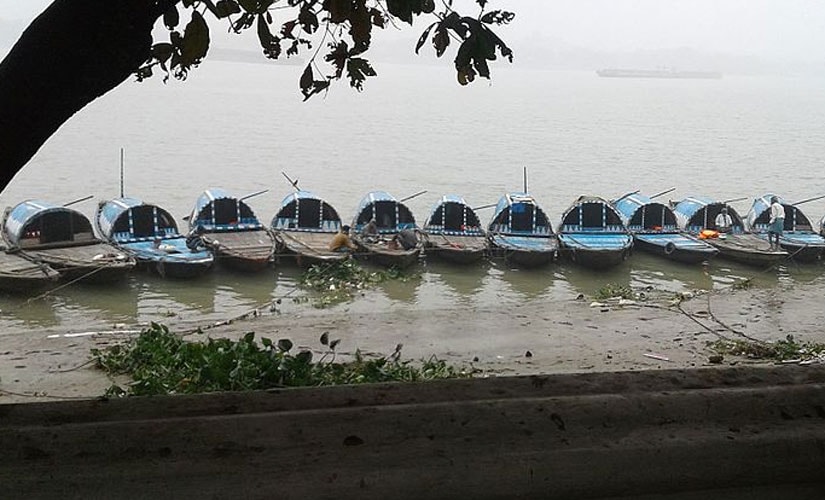 Tamluk Lok Sabha constituency in West Bengal covers the Assembly constituencies of Tamluk, Panskura Purba, Moyna, Nandakumar, Mahisadal, Haldia (SC) and Nandigram. Image courtesy Aishikmallik/Wikimedia Commons[/caption] Male electors: 7,96,779 Female electors: 7,30,494 Assembly Constituency: Tamluk, Panskura Purba, Moyna, Nandakumar, Mahisadal, Haldia (SC), Nandigram Reserved: No Delimitation: Yes. In 2008. Results in last four Lok Sabha elections: Lakshman Chandra Seth of the CPM won the seat in 1999 and 2004 elections. Suvendu Adhikari of the TMC won the election in 2009 and 2014. In the 2016 bypoll, Dibyendu Adhikari of the TMC won the seat. 2. Kanthi Lok Sabha Constituency Constituency number: 31 Total electors: 14,90,409 (2014 estimated) Male electors: 7,77,345 Female electors: 7,13,064 Assembly Constituencies: Chandipur, Patashpur, Kanthi Uttar, Bhagabanpur, Khejuri (SC), Kanthi Dakshin, Ramnagar Reserved: No Delimitation: Yes, in 2008. Egra constituency was shifted to Medinipur Lok Sabha constituency, while Mugberia Assembly segment ceased to exist. Results in last four Lok Sabha elections: Nitish Sengupta of the TMC won the seat in 1999 elections. In 2004 elections, Prasanta Pradhan of the CPM won the seat. Since the 2009 election, TMC’s Sisir Kumar Adhikari is representing the constituency. Demographics: Part of Purba Midnapore district in southern Bengal, Kanthi, a largely rural constituency, has a substantial Muslim population, which can be a major factor in deciding close contests. 3. Ghatal Lok Sabha Constituency Constituency number: 32 Total electors: 16,10,489 (2014 estimates) Male electors: 8,35,803 Female electors: 7,74,686 Assembly Constituencies: Panskura Paschim, Sabang, Pingla, Debra, Daspur, Ghatal (SC), Keshpur (SC) Reserved: No Delimitation: Yes. The constituency came into existence only in 2009. Results in last four Lok Sabha elections: In the 2009 elections, Gurudas Dasgupta of CPI won the seat. In 2014 polls, Dipak Adhikari (Dev) of the TMC won the seat. 4. Jhargram Lok Sabha Constituency Constituency number: 33 Total electors: 14,75,112 (2014 estimates) Male electors: 7,53,840 Female electors: 7,21,272 Assembly Constituencies: Nayagram (ST), Gopiballavpur, Jhargram, Garhbeta, Salboni, Binpur (ST), Bandwan (ST) Reserved: Yes. For Scheduled Tribes Delimitation: Yes. In 2008 Results in last four Lok Sabha elections: CPM’s Rupchand Murmu represented the constituency between 1991 and 2009. In the 2009 elections, CPM’s Pulin Bihari Baske won the seat. However, he lost to TMC’s Uma Saren in 2014 polls. Demographics: This constituency is dominated by the tribal electorate. Tribals constitute 30 percent of the population in this constituency. The Santhals are the most dominant tribe, as they account for 50 percent of the total tribal population in the state. It is to be noted that BJP has been making inroads into the tribal vote bank in this constituency. 5. Medinipur Lok Sabha Constituency Parliamentary Constituency - 34 Total Electors: 1,499,673 (2014 estimates) Male Electors: 770,363 Female Electors: 729,310 Assembly Constituencies: Egra, Dantan, Keshiary (ST), Kharagpur Sadar, Narayangarh, Kharagpur, Medinipur Reserved: No Delimitation: Yes. After delimitation, Egra Vidhan Sabha segment transferred to Medinipur. Results in last four Lok Sabha elections: Former home minister Indrajit Gupta was the most prominent MP from this constituency. After his death in 2001, Prabodh Panda continued to represent the constituency till 2014, when he lost to Sandhya Roy of TMC. Demographics: Medinipur, which comprises large parts of the Paschim Midnapore district, is situated in Jangalmahal region, a contagious tribal belt in West Bengal. Tribal population, estimated to be around 15 percent, can be crucial for political parties in this constituency. 6. Purulia Lok Sabha Constituency Constituency number: 35 Total electors: 14,71,933 (2014 estimates) Male electors: 7,64,758 Female electors: 7,07,175 Assembly Constituencies: Balarampur, Baghmundi, Joypur, Purulia, Manbazar (ST), Kashipur, Para (SC) Reserved: No Delimitation: Yes. In 2008. Results in last four Lok Sabha elections: Between 1991 and 2009, Bir Singh Mahato of the AIFB represented the constituency. In 2009 elections, Narahari Mahato won the seat on an AIFB ticket. The TMC breached this bastion for the first time in 2014 when Mriganko Mahato defeated his AIFB rival by over 1.5 lakh votes. Demographics: Purulia is one of the four constituencies of West Bengal where tribal votes can influence the elections. Tribals account for at least 20 percent of the electorate in Purulia. Kurmis, an Adivasi group dominant in Jangalmahal region, are found in sizeable numbers in the constituency. 7. Bankura Lok Sabha Constituency Constituency number: 36 Total electors: 15,03,812 (2014 estimated) Male electors: 7,75,893 Female electors: 7,27,919 Assembly Constituencies: Raghunathpur (SC), Saltora (SC), Chhatna, Ranibandh (ST), Raipur (ST), Taldangra, Bankura Reserved: No Delimitation: Yes. In 2008 Results in last four Lok Sabha elections: Moon Moon Sen, the yesteryear actress, is the sitting MP belonging to the TMC. She defeated nine-term CPM MP Basudeb Acharia in the 2014 elections. Demographics: Bankura is part of the Jangalmahal belt, a region dominated by tribal groups. Santhals Bhumij, Koras, Mahali, Mech, Munda and Kora are some of the tribes in the area. Tribal population in Bankura stands at only 10 percent. However, if one adds Kurmis, who have been demanding Scheduled Tribe status since long, to the list, Bankura may stand out as a tribal-dominated rural constituency. 8. Bishnupur Lok Sabha Constituency Constituency number: 37 Total electors: 14,66,921 (2014 estimates) Male electors: 7,59,317 Female electors: 7,07,604 Assembly Constituencies: Barjora, Onda, Bishnupur, Katulpur (SC), Indas (SC), Sonamukhi (SC), Khandaghosh (SC) Reserved: Yes. For Scheduled Castes Delimitation: Yes. Taldangra, Raipur (ST) and Ranibandh (ST) Assembly segments went to Bankura Lok Sabha constituency. Indpur ceased to exist as a constituency. Results in last four Lok Sabha elections: Sandhya Bauri was elected on a CPM ticket in the 1999 elections. In 2004 and 2009 elections, CPM candidate Susmita Bauri was elected the MP. In 2014, Saumitra Khan of the TMC was elected MP. Demographics: The eponymous region, known for its historical sites and Hindustani classical music, was a bastion of the Left until 2014. The elections in this constituency are highly influenced by the Scheduled Caste population, which is estimated to be around 32 percent.


)
)
)
)
)
)
)
)
)



